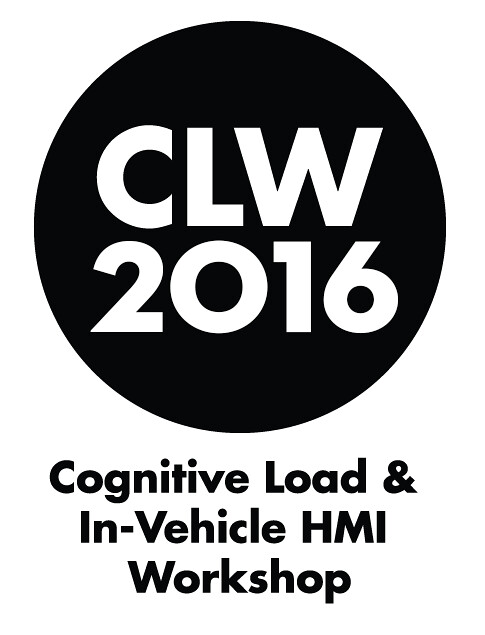
We are excited to announce that CLW 2016 will be held at AutomotiveUI 2016 in Ann Arbor, MI. The half-day workshop will take place in the morning of October 24.
The workshop has three goals:
- Explain the theoretical underpinnings behind common eye tracking measures of cognitive load. The first goal of the workshop is to communicate the theoretical reasoning behind the use of eye tracking measures and practical considerations of how eye tracking should be conducted within the automotive setting. A strong focus will be on ensuring that participants understand how the changes seen in these measures correspond to differences in workload. The workshop will also then include discussion of practical aspects of using these measures in the automotive environment and how these can affect the outcome of the measure data.
- Demonstrate how eye tracking measures of workload are collected. The attendees of the workshop will gain an understanding about how to actually collect eye tracking measures of workload. The second goal of the workshop is to ensure participants receive a demonstration of how these measures are collected and some level of hands-on experience in the collection of measures. Again the focus here will be toward the practical considerations of using these measures within an automotive environment.
- Present techniques of how the data from these measures are reduced and analyzed. The last goal for the workshop in an effort to allow attendees to walk away with applicable knowledge is to ensure they understand how to filter the data that they will collect. To some extent, this will involve summarizing existing practice codified in standards or discussed in previous studies within the space for the participants. However, the workshop will go beyond what is in those documents, discussing practical problems of filtering and cleaning the data, rules for determining and eliminating outliers, and methods of quantifying lost data. The workshop will also discuss identifying potential confounding factors and situations that arise with the use of eye tracking data that can bias interpretations of results, as well as pointing attendees to software that can help produce results.
The organizers will bring together experts to address the above issues.